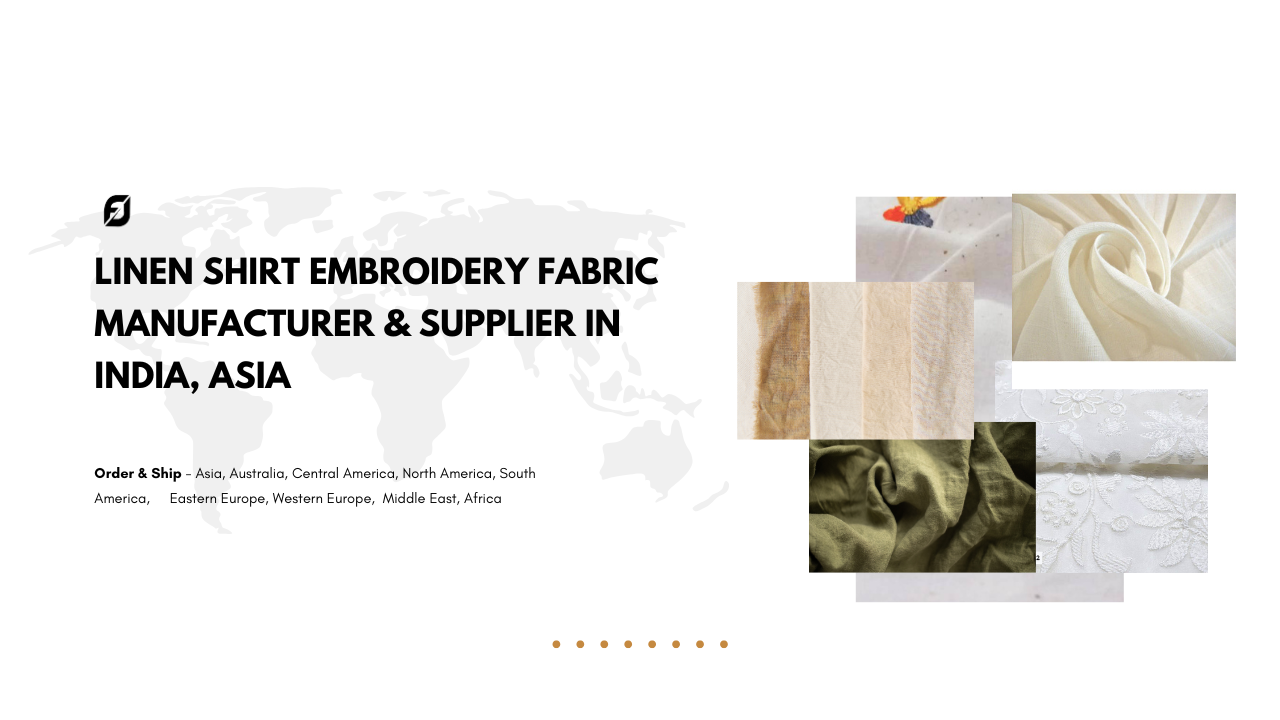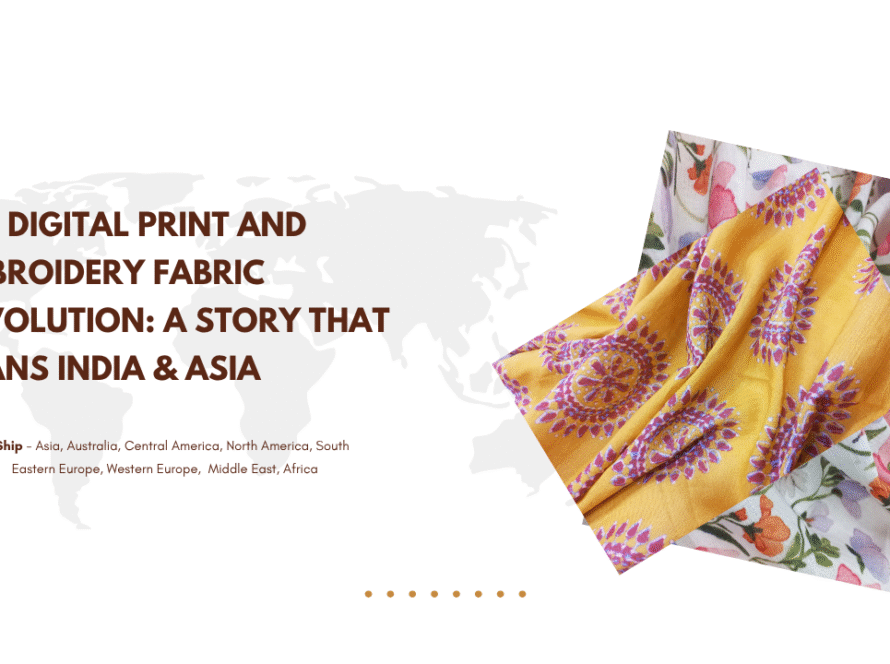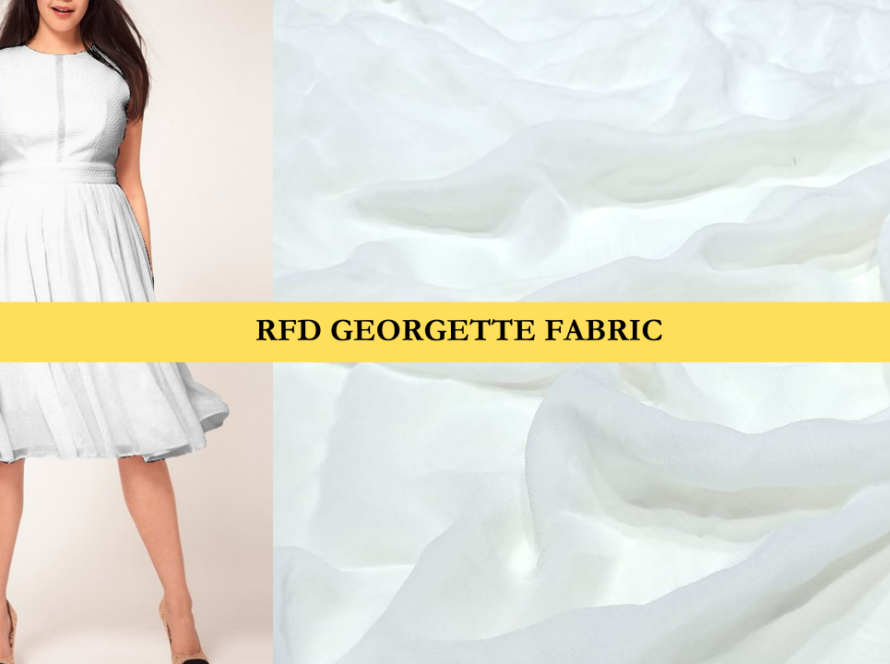Gaji Silk is a luxurious, smooth, and durable fabric known for its rich texture and soft sheen. Originating from the western regions of India, particularly Gujarat, Gaji Silk is made from high-quality silk fibers, making it an ideal choice for garments that combine tradition with elegance.
Its unique weaving pattern gives the fabric a glossy finish and makes it comfortable to wear, especially in festive or formal settings.
Why Gaji Silk Embroidery Fabric is Perfect for Sarees & Custom Garments
Popular Garments Made from Gaji Silk
Gaji Silk is most commonly used in the creation of traditional Indian garments, with sarees being the top choice. Other popular outfits include lehengas, dupattas, and designer kurtas. The fabric’s versatility also lends itself to the making of gowns, ethnic jackets, and accessories like stoles and shawls. Its softness and lightweight nature make it a favorite for both men’s and women’s clothing.
Why are Gaji Silk Sarees So Famous?
Gaji Silk sarees have garnered a reputation for their timeless elegance and luxurious feel. The fabric drapes beautifully, enhancing the wearer’s grace, making it a popular choice for weddings, festive occasions, and other grand events. The sarees are often adorned with intricate embroidery and are prized for their comfort, ease of movement, and breathability, despite their rich texture.
Is Gaji Silk Fabric Dyeable?
Yes, Gaji Silk is dyeable. Its natural fibers absorb colors well, resulting in vibrant, long-lasting hues. Whether you want deep, rich colors or light, pastel shades, Gaji Silk responds beautifully to different dyeing processes. This adaptability allows for a wide range of color options, giving designers and manufacturers the freedom to experiment with their creations.
Can Gaji Silk Be Printed On?
Yes, Gaji Silk is suitable for printing. Due to its smooth surface and excellent dye absorption, digital printing and block printing techniques work well on this fabric. These prints can add intricate patterns, motifs, and unique designs, giving a modern touch to traditional garments made from Gaji Silk.
Types of Embroidery Possible on Gaji Silk
The fine texture of Gaji Silk makes it ideal for various types of embroidery. Traditional Indian embroidery techniques like Zari work, Resham (silk thread) embroidery, and mirror work are commonly used to enhance Gaji Silk garments. Other styles such as beadwork, sequins, and cutwork also look stunning on Gaji Silk, making it a versatile canvas for embellishment.
Madhav Fashion and Gaji Silk Embroidery Fabric
Madhav Fashion, a leader in embroidery fabric manufacturing, offers Gaji Silk Embroidery fabric in both dyeable and colored varieties. Their production of Gaji Silk fabrics allows customization for clients seeking specific shades or embroidery styles, catering to global markets.
Whether it’s for sarees, kurtas, or ethnic wear, Madhav Fashion ensures high-quality fabric and intricate embroidery patterns, providing garment manufacturers and designers with endless possibilities.
Gaji Silk Embroidery fabric is a symbol of elegance and versatility, making it an essential fabric in the world of fashion. From its vibrant dyeability and compatibility with various printing techniques to the intricate embroidery styles it supports, Gaji Silk is an excellent choice for designers seeking luxury and creativity.
With manufacturers like Madhav Fashion producing this fabric in a wide range of colors and designs, Gaji Silk continues to shine on the global stage.
________________________________________________
What Makes Gaji Silk Fabric Unique?
Gaji Silk is unique due to its rich texture, smooth finish, and the luxurious feel it provides. Unlike other silks, Gaji Silk is known for its blend of durability and elegance. The weaving process involves high-quality silk fibers that result in a fabric with a natural sheen and luster. Gaji Silk is traditionally produced in Gujarat, India, where skilled artisans work meticulously to maintain the fine quality of the fabric.
The smooth surface of Gaji Silk makes it an ideal choice for both printing and embroidery, allowing designers to create intricate patterns and embellishments. Its ability to drape beautifully makes it particularly popular for sarees and lehengas. Gaji Silk is also prized for its comfort, as it’s lightweight and breathable, making it suitable for all seasons. Whether for weddings, festive occasions, or formal gatherings, Gaji Silk remains a favorite due to its timeless appeal and versatile nature. Its combination of traditional craftsmanship with modern fashion trends ensures that Gaji Silk continues to be a sought-after fabric globally.
What Types of Garments Are Most Commonly Made from Gaji Silk?
Gaji Silk is used to make a wide variety of garments, with traditional Indian attire being the most popular. The most common garment made from Gaji Silk is the saree, known for its smooth texture, luxurious feel, and elegant drape. Gaji Silk sarees are highly sought after for weddings, festivals, and formal events due to their rich appearance and comfort.
In addition to sarees, lehengas are another popular garment made from Gaji Silk. These richly embroidered skirts are often paired with equally stunning dupattas (scarves) and cholis (blouses). Kurtas and kurtis made from Gaji Silk are also widely worn for festive and semi-formal occasions, combining both style and comfort.
Gaji Silk is versatile enough to be used for men’s wear as well. Ethnic jackets, sherwanis, and kurta-pajama sets are commonly designed using Gaji Silk. Additionally, Gaji Silk is used for accessories such as stoles, scarves, and even home furnishings like cushions and curtains, making it a fabric of choice for both fashion and interior design.
Why Are Gaji Silk Sarees So Popular in India and Abroad?
Gaji Silk sarees are celebrated for their luxurious feel, smooth texture, and elegant drape, making them a popular choice for special occasions like weddings, festivals, and formal events. The fabric’s natural sheen adds a sense of sophistication and grace, which enhances the beauty of the saree. Gaji Silk’s ability to drape well makes it flattering for different body types, adding to its appeal for women across the world.
In India, Gaji Silk sarees hold cultural significance, especially in regions like Gujarat, where the fabric originates. The sarees are often adorned with intricate embroidery, mirror work, and zari, giving them a regal appearance. Abroad, these sarees are highly valued by the Indian diaspora and lovers of ethnic fashion, who appreciate the traditional craftsmanship blended with contemporary designs.
Moreover, Gaji Silk sarees are comfortable and breathable, allowing them to be worn in various climates. Their durability ensures they last for years, making them a long-term investment for many women. The versatility in designs, colors, and embellishments further enhances their global appeal.
Is Gaji Silk Fabric Dyeable, and What Colors Are Available?
Yes, Gaji Silk fabric is dyeable, making it one of the most versatile fabrics in terms of color customization. Gaji Silk has excellent dye absorption properties, allowing vibrant and long-lasting hues to be created. This adaptability makes it a favorite among fashion designers and manufacturers looking to create bespoke designs or meet specific color demands. Whether the desired look is deep and rich tones or light and subtle shades, Gaji Silk responds well to various dyeing techniques.
In its natural state, Gaji Silk typically has a neutral, off-white hue, but it can be dyed into an array of colors, ranging from bright jewel tones to soft pastels. Designers can also create multi-colored patterns through tie-dye or ombré techniques. The dyeing process ensures that the fabric retains its smooth texture and sheen, enhancing the overall aesthetic appeal of the garments made from it.
Fashion brands like Madhav Fashion offer Gaji Silk in numerous colors to cater to different tastes and fashion trends, ensuring that designers have the freedom to experiment with their creations.
Can Printing Be Done on Gaji Silk Fabric?
Yes, Gaji Silk is highly suitable for printing due to its smooth texture and ability to absorb dye well. The fabric’s glossy surface allows intricate and vibrant prints to be created with excellent clarity and detail. Digital printing, block printing, and screen printing are all techniques that can be successfully applied to Gaji Silk.
Digital printing, in particular, has become a popular method for creating contemporary designs on Gaji Silk. This technique allows for intricate patterns, floral motifs, and even photographic images to be transferred onto the fabric with precision. The result is a visually stunning garment that combines traditional silk with modern aesthetics. Block printing is another common method used, particularly for ethnic or handcrafted designs. This technique imparts a unique texture and appearance to the fabric, giving it a more artisanal feel.
Printing on Gaji Silk opens up endless possibilities for creating custom garments, from sarees and lehengas to scarves and home décor items. The combination of luxurious silk with innovative printing techniques ensures that each piece stands out with elegance and style.
What Types of Embroidery Can Be Done on Gaji Silk?
Gaji Silk’s fine texture and smooth finish make it a perfect canvas for various types of embroidery. From traditional Indian embroidery techniques to modern styles, Gaji Silk can accommodate a wide range of embellishments. Zari work, which involves the use of metallic threads to create intricate patterns, is one of the most popular types of embroidery on Gaji Silk. This technique gives the fabric a regal appearance, making it ideal for sarees, lehengas, and bridal wear.
Resham (silk thread) embroidery is another common technique used on Gaji Silk, adding a touch of subtle elegance with its fine detailing. Mirror work, beadwork, and sequin embroidery are also often used to enhance the fabric’s beauty. These embellishments can be applied to create intricate patterns or simple, elegant designs, depending on the desired look.
The versatility of Gaji Silk allows designers to experiment with different styles of embroidery, ensuring that garments made from this fabric stand out. Whether for festive wear, bridal attire, or casual luxury, embroidered Gaji Silk garments are always in high demand.
Is Gaji Silk Fabric Suitable for Global Fashion Markets?
Absolutely! Gaji Silk’s luxurious texture, durability, and versatility make it highly suitable for global fashion markets. With the rising demand for sustainable and ethically sourced fabrics, Gaji Silk stands out as a natural and eco-friendly option. The fabric’s smooth texture and rich sheen make it appealing to international designers looking to incorporate luxurious textiles into their collections.
Gaji Silk’s adaptability to various climates makes it suitable for both warm and cool weather, increasing its global appeal. Designers worldwide are experimenting with Gaji Silk for different types of garments, from sarees and lehengas to evening gowns, scarves, and accessories. The fabric’s compatibility with embroidery and printing techniques also allows for endless creativity, ensuring that it meets the diverse tastes of global consumers.
With manufacturers like Madhav Fashion producing high-quality Gaji Silk Embroidery fabric, the material is increasingly making its mark in global fashion markets, offering unique designs and a touch of Indian craftsmanship.
How Does Madhav Fashion Contribute to Gaji Silk Production?
Madhav Fashion is a leading manufacturer in the textile industry, known for its high-quality embroidered fabrics, including Gaji Silk. Their production process emphasizes both traditional craftsmanship and modern technology, ensuring that the fabric meets international standards. Madhav Fashion offers Gaji Silk in both dyeable and colored varieties, catering to the needs of designers and garment manufacturers globally.
Madhav Fashion’s Gaji Silk Embroidery fabric is available in a wide range of colors, giving designers the flexibility to experiment with different shades. The company also specializes in custom embroidery designs, offering intricate patterns and embellishments to suit various fashion trends. By using the finest silk and ensuring a meticulous production process, Madhav Fashion ensures that their Gaji Silk fabric is of premium quality, making it a preferred choice for global markets.
Their commitment to sustainability, innovation, and quality control allows Madhav Fashion to produce Gaji Silk fabrics that appeal to both traditional and modern fashion sensibilities.
What Is the Future of Gaji Silk in the Global Fashion Industry?
Gaji Silk has a promising future in the global fashion industry due to its adaptability, luxury, and eco-friendliness. As consumers become more conscious of the origins and sustainability of the fabrics they wear, Gaji Silk offers a natural, ethically produced option. Its ability to absorb dye and adapt to printing techniques ensures that it stays relevant in modern fashion trends, while its association with traditional Indian craftsmanship keeps it rooted in cultural heritage.
With the global rise in demand for eco-conscious, luxurious textiles, Gaji Silk is likely to gain more prominence in international markets. Designers from around the world are increasingly incorporating Gaji Silk into their collections for both formal wear and casual luxury clothing. Brands like Madhav Fashion, which offer custom embroidery and dyeable options, are making it easier for global fashion houses to access this premium fabric.
As the fashion industry continues to evolve, Gaji Silk will remain a staple for those seeking a blend of tradition, sustainability, and high-end fashion, ensuring its relevance for years to come.






